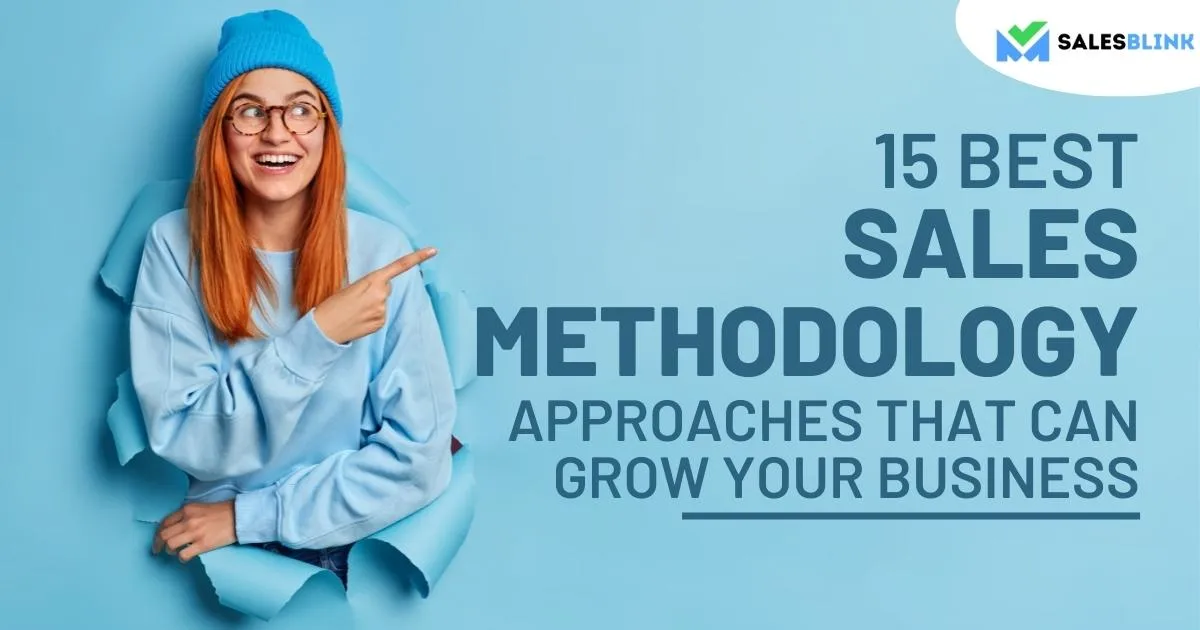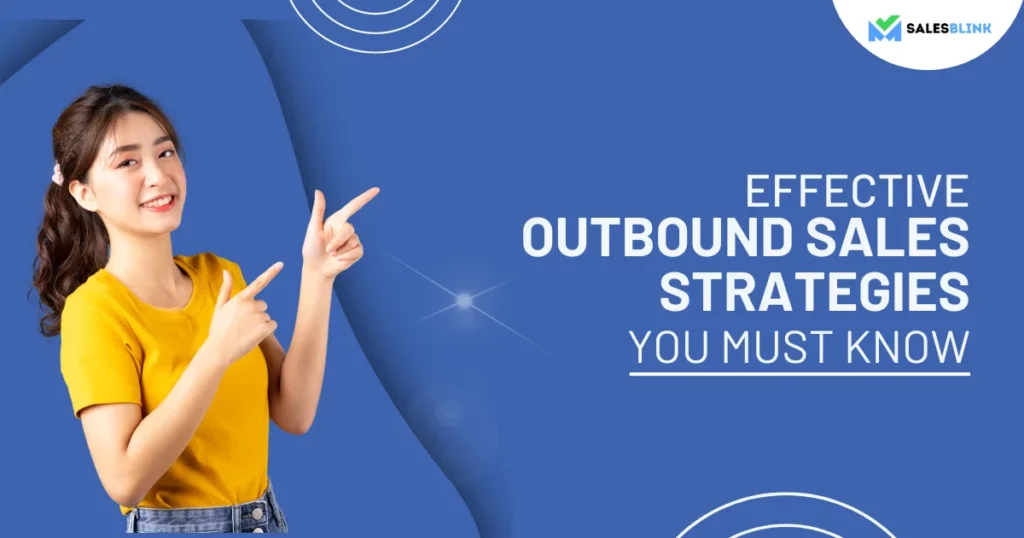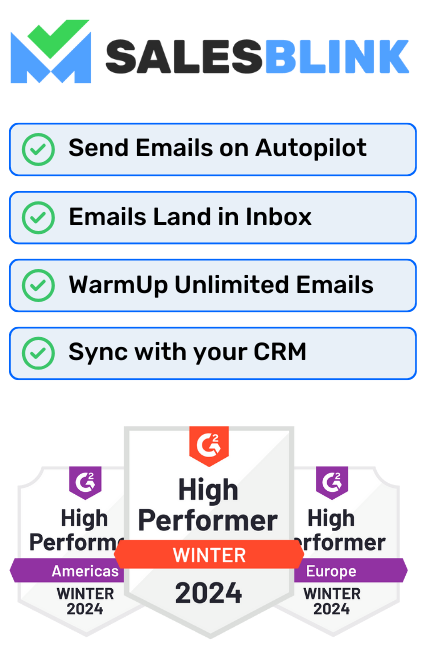15 Best Sales Methodology Approaches That Can Grow Your Business
Are you tired of a low conversion rate despite putting in your best efforts to impress your audience? It is indeed frustrating when you run amazing ads and get visits or messages, but they fail to convert into buyers. But have you considered that you may be just lacking a proper sales methodology?
Many businesses find themselves swinging in the dark because they are not following a proper method in their attempts to find, capture, and convert leads. They have no clear steps to understand and influence their leads, making all their marketing efforts futile! In fact, more than 40% of salespeople find the first stage of finding good leads very challenging.
If you’re facing similar issues, you need to implement a suitable sales methodology today! This is because your sales methodology is the backbone of your sales process.
However, there are several types of sales methodologies. You must find the right one by understanding all your options and aligning them with your business and market. But this can be really tricky! And the wrong choice will create a flawed process, leaving your sales representatives in utter confusion.
Don’t worry, though! We have you covered with this comprehensive blog on the best sales methodologies to quickly grow your business. So, let’s begin without further ado.
Table of Contents
What Is A Sales Methodology?
A sales methodology is a framework that guides your sales representatives to find prospects and convert them into buyers. It takes the sales goals and turns them into actionable steps for your sales reps to follow during every stage of the sales process. This helps sales reps guide prospects through the awareness, consideration, and decision stage seamlessly.
Now, various sales methodologies offer different approaches to the sales process. But every methodology includes the following fundamental steps-
- Identifying the target market and raising awareness– To turn individuals into leads.
- Connecting with leads to help them in consideration– To turn leads into qualified leads.
- Exploring the leads to find opportunities– To find selling opportunities amongst qualified leads.
- Advising the prospects to take the purchase decision– To turn leads into customers by using the opportunities.
The correct sales methodology forms a standardized and streamlined process for your entire sales team to follow. As a result, it ensures the greatest cost-effectiveness and conversions from the sales process.
Why You Need A Sales Methodology?
Here’s why you need to use a sales methodology,
Consistency: A sales methodology offers a structured and consistent way of handling sales processes. This ensures that every sales team member follows the same procedure, which can lead to predictability and reliability in sales outcomes.
Efficiency: Having a defined sales methodology can help streamline the sales process, reducing wasted time and effort. It can help salespeople understand the best way to proceed, increasing productivity.
Training and Development: A solid sales methodology makes training new sales representatives easier. It provides a roadmap that new hires can follow, increasing the onboarding speed and reducing the learning curve.
Performance Measurement and Improvement: With a standardized sales methodology, it’s easier to measure performance and identify areas for improvement. You can track how well the methodology works and make tweaks necessary to improve sales outcomes.
Better Customer Relationships: A well-implemented sales methodology can help build better customer relationships. It enables sales representatives to provide a consistent, high-quality experience to all prospects.
Best Sales Methodologies

Many different sales methodologies have stood the test of time. But not all will suit your business! Let’s see what your top 15 sales methodologies-
1. SPIN Selling

SPIN is an acronym for the four factors a sales rep should focus on while questioning prospects – the situation, the problem, the implication, and the need-payoff. Discussing these subjects help to find the buyer’s pain points, helping sellers build rapport with them and make accurate suggestions. Here are the key questions asked in the SPIN selling methodology-
- Situation questions aim to understand the prospect’s current situation.
- Problem questions get to the basis of the prospect’s issue.
- Implication questions in sales prompt the prospective customer to think about the results of not solving the problem.
- Need-payoff questions encourage your prospect to consider how the situation would improve by solving the issues.
2. NEAT Selling

This is a qualification framework developed by The Harris Consulting Group and Sales Hacker to replace the BANT(Budget, Authority, Need, and Timeframe) and A.N.U.M. (Authority, Need, Urgency, and Money) methodologies. It is ideal for enterprise sales and involves the following aspects-
- Need– The “N” in N.E.A.T. stands for the core needs of prospects. Salespeople must go deeply into their prospect’s challenges to find how the product matters to them.
- Economic impact– The “E” represents the economic impact. It means you must help the buyer understand the financial implications of making the change to your product. The salespeople must compare the financial results of the current methods of prospects with the results that using your offering can bring.
- Access to Authority– “A” stands for access to authority. Authority involves influencing an organization’s decision-makers by engaging contacts who can contact and convince them on your behalf. This step is crucial in case you can not reach or persuade the leaders of an organization directly.
- Timeline– “T,” or Timeline, refers to the setting of deadlines or special events that compel your prospect to make a favorable decision that results in sales. Taking immediate action must have clear benefits for the prospect while missing the deadline should have negative consequences.
3. Conceptual Selling
Conceptual selling is based on the premise that customers don’t buy your offering at its face value. Instead, they buy the concept of the solution the offering represents. With this in mind, your sales reps should focus on understanding your prospects’ concept and decision-making process. Then, they must integrate this understanding into your sales approach, especially in the case of larger projects.
To simplify conceptual selling, your salespeople should ask questions that fall into the following categories-
- Confirmation questions to confirm the accuracy of the company’s idea of the prospects’ needs, wants, and product/service concept. It involves correcting the knowledge of both the company and prospects, so they are on the same page.
- Attitude questions to understand a prospect and determine how they connect to your project (of implementing the offering).
- Commitment questions to make necessary inquiries after the client invests in your project to ensure that you meet their needs correctly.
- Basic issue questions that uncover potential problems with the offerings and their solutions.
This sales methodology divides the sales process into three stages- getting the information, giving the information, and getting commitment. And the sales reps must ensure that it creates a win-win situation for the client and the company.
4. SNAP Selling
Established by Jill Konrath in 2012, the SNAP methodology aims to speed up the sales process by making it easy for busy and distracted prospects to adopt the product or service. It addresses the client’s perspective to help them understand, appreciate, and buy the offering. Here are the steps involved in this process-
- Simple– Make it easy for prospects to change their current methods and embrace what you’re selling.
- Invaluable– Your prospects are already busy and overwhelmed with promotions. This leaves them with no time to understand every feature. So, you need experts to stand out and showcase the value of your product to prospective customers.
- Align– You must also align your promotional efforts with the beliefs and needs of your target customers to have the maximum impact on them.
- Priority– Focus on the prospects’ priorities to create relatable and compelling sales campaigns that win the best deals.
Unlike the traditional thinking that clients make one purchase decision, this is a top sales methodology that focuses on convincing the client at three decision points. These are- allowing access, moving away from the current status, and then changing resources.
5. Challenger Sale
In the book The Challenger Sale, Matthew Dixon and Brent Adamson asserted that every B2B salesperson fits into one of five personas: relationship builders, lone wolves, hard workers, reactive problem solvers, and challengers.
As per their study, the most successful are the challengers who follow the teach-tailor-take control process. They termed this sales model the “challenger sale.” Here are its key steps-
- Teach– First, you must teach your target prospects about business problems, new ideas, and relevant observations.
- Tailor– Next, you must tailor your communications to specific prospects.
- Take Control– Finally, you must take control of the sale by persuading the customer with the end goal of revenue in mind.
6. The Sandler System
Sales traditionally revolve around the idea that sellers must pursue and convince potential buyers. But the Sandler methodology goes for an unorthodox approach and states that both parties should be equally invested.
In the Sandler system, sellers take the role of advisors and work with clients to understand their challenges and suggest solutions. You must emphasize relationship building, lead qualification, and deal closing in this approach. Moreover, you must not pursue a lead if your solution does not truly address the potential client’s concerns.
If you get it right, the Sandler system largely flips the sales process. Rather than the seller convincing the prospective customer to buy, the prospect starts convincing the seller to sell!
7. Solution Selling
Solution selling drives the focus away from the standardized product and toward the benefits of a personalized solution from the prospect’s perspective. It assumes that consumers are educated and perform research to find the best solutions to their problems.
This technique originated in the late 1980s and has evolved to adapt to market changes and buyers’ maturity. It is now a highly personalized model where you must identify the customers’ unique situation and work with them to reach a mutually beneficial solution.
8. Inbound Selling
Inbound selling counts on the effectiveness of marketing methods to capture potential buyers. The prospects get impressed with the promotional efforts (like ads, emails, blogs, social posts, etc.) and themselves contact the company.
However, they often research products on their own before contacting the company. And their contact may be through diverse platforms such as social media, landing pages, product pages, website forms, emails, and phone calls. This initial contact turns them into leads.
Following this, your inbound sales reps must take the leads through the consideration and decision stages to convert them by taking four actions:
- Identify– Inbound sales reps detect and prioritize active buyers. These are buyers who have visited the company site, started a live chat, filled out a form, or reached out on social media. However, they have not yet made the purchase.
- Connect– Inbound reps reach out to such prospects with personalized messages. You must base this personalization on the prospect’s role, interests, industry, or shared connections. And you can find these details by analyzing page views, conversions, and social media interactions.
- Explore– In the phase, your reps focus on rapport building and dive deeper into the prospect’s challenges and goals. Accordingly, they introduce suitable products or services.
- Advise– Lastly, your sales representatives create and deliver a personalized sales presentation. It covers what they’ve learned about the prospect and how the suggested offering can help them.
The inbound approach adds a personal touch and offers solutions that the prospect truly requires. And this maximizes conversions and customer satisfaction.
9. Target Account Selling
Target account selling focuses on targeting with the idea that picking the correct prospects is the most crucial aspect of a sales process. It prioritizes getting the highest quality of qualified leads to ensure that your engagement and persuasion efforts are lucrative.
This methodology involves creating comprehensive buyer personas and performing extensive research during lead qualification. It also depends significantly on sales automation to identify the ideal prospects who will be most receptive to your solution based on their key traits.
The essence of this methodology is the prioritization of the quality of leads over their quantity. As a result, it involves more effort at the start of the sales process to ensure higher close rates and sales at the end of the process. And it’s the sales that make it all worthwhile!
10. Command of the Sale
Force Management conceptualized this selling method. And the concept behind it is that you should customize your company’s top sales tools and activities based on existing solutions.
It focuses on understanding the products and the customer’s business in detail to offer the perfect solution. This methodology counts on the skills of your sales representatives and specifies that they must know-
- What does the customer want to achieve?
- What capabilities does the customer need to add value to their business?
- How can your business deliver that value, and how is it better than the competition?
- What are the metrics that the customer uses to measure success?
- What is the evidence that can demonstrate improved performance due to the offering?
Command of the Sale requires you to communicate and deliver the message that- you can provide personalized solutions to the customers’ problems that are much better than competitors’, thus allowing you to charge a premium for them.
11. Gap Selling
Gap selling methodology that highlights the gap between where a prospect’s business stands and where they want it to be. It then identifies the hurdles in the way to get the target and offers the offering as solutions to them.
In other words, your sales reps put the prospects first in this sales model. They develop a deep understanding of a potential customer’s business, issues, and goals. And then, they position your product or service as the best method to fill the gaps between the present situation and the goals.
12. Consultative Selling
Consultative selling is a popular B2B enterprise sales approach that takes solution selling to the next level. This technique leverages the salesperson’s experience, expertise, and knowledge to offer consultation to the prospect without direct promotion.
It engages prospects and builds your credibility by showing that you understand their business’s situation and have the competence to offer the best solutions. Then, it helps the prospect identify their own pains and make their own decision with your support.
Consultative selling is about finding the right solution for the customer while suggesting the marketed offering in the process where justified.
13. Value Selling Framework
The value selling framework is a straightforward methodology where sales reps ask the right questions, communicate their product’s unique value, and formulate a mutually beneficial solution.
Moreover, it involves lead qualification and lead value assessment, enabling salespeople to engage only the right leads and close deals faster. Value based selling is a productive method to find the best leads and then match their needs with the offerings to encourage the purchase logically.
14. M.E.D.D.I.C. Selling

The M.E.D.D.I.C. sales methodology is a highly disciplined, tech-driven, data-based, and tightly controlled approach to the sales process. The sales team at Parametric Technology Corporation invented this sales model in the 1990s.
This methodology emphasizes maximizing productivity by determining if a lead is qualified enough using data-driven techniques. And you can filter out leads that are not very likely to convert at this early stage. M.E.D.D.I.C. stands for the steps in the process, which are-
- Metrics– Find the right prospects and find what they want to gain in quantifiable terms using metrics.
- Economic Buyer– Identify the decision maker in the client company.
- Decision Criteria– Understand the factors the prospect will consider while making a decision and how each criterion is weighed.
- Decision Process– Understand how the client makes the final decision.
- Identify Pain– Find what problem the customer-facing that your product can solve.
- Champion– Find and convince the individual at the company you’re targeting who wants you to succeed and will speak for you to the decision-makers.
This methodology aims to maintain high cost-effectiveness and conversions in the sales process by pursuing only the best leads through a strategic, data-based process.
15. Customer-Centric Selling
As the name suggests, customer-centric selling is all about understanding and meeting the needs of your customer with their convenience in mind.
You adapt to the circumstances of each customer by fostering a two-way dialogue, adjusting to their timeline, and serving as a knowledgeable problem-solving partner. This approach involves all it takes to collaborate with the clients to find solutions instead of selling to them.
How To Choose The Right Sales Methodology?
The correct methodology will help your sales team enjoy maximum productivity without confusion. However, making the wrong choice can confuse both your reps and customers. This can break down your entire sales process! So, how do you choose the right methodology?
You must clearly understand your product, customer, and market to make the right choice. Then, you must match these factors with the top sales methodologies based on the above discussion to find the best fit.
So, the key is understanding the product you are marketing and then conducting empirical research to define and characterize your target customer and market conditions. This understanding, coupled with the knowledge about top sales methods, will help you decide which methodology best suits your business.
How To Implement A Sales Methodology?
Once you finish choosing a sales methodology, here’s how you can implement it,
1. Understand the Methodology
Ensure your team understands the chosen methodology inside and out. You should provide resources, like books, workshops, or seminars, to ensure your team understands the principles of the methodology.
2. Customize to Suit Your Needs
Most methodologies provide a general framework, but it’s essential to adapt it to suit your specific product, industry, and customers. This might involve tweaking certain aspects of the methodology or incorporating elements from other methodologies.
3. Training and Development
Conduct thorough training sessions to ensure your sales team finds the chosen methodology familiar. Role-playing exercises can be particularly beneficial to help team members understand how to implement the methodology in real-world scenarios.
4. Implement the Methodology
Once your team gets trained, implement the methodology. Start with a pilot program, so you can tweak the methodology based on initial results before rolling it out across the entire sales team.
5. Monitor and Review
Monitor your team’s performance and review how well the methodology works. This could involve regular meetings to discuss challenges and successes, or you might use CRM software to track key metrics.
6. Iterate and Improve
Based on your monitoring and review, make adjustments to improve the methodology’s effectiveness. This could involve further training or perhaps even choosing a different methodology if the current one isn’t working.
7. Reinforce the Methodology
Reinforcement is vital for long-term adoption. This might involve regular training sessions, coaching, and feedback. Rewarding those who successfully employ the methodology can also encourage ongoing use.
The Future Of Sales Methodology
The future will see rising competition amongst businesses to capture and convert leads quickly. And this will drive companies to streamline their sales process to shorten their sales cycle and boost conversions.
This is where the top sales methodologies will play an increasingly vital role by providing a cost-effective method to simplify and optimize the entire sales process. Moreover, sales software will evolve to incorporate diverse sales methods as companies move towards further automation. You can try using SalesBlink as it will handhold you in each stage of the sales cycle. Analytics will also play a growing role in ensuring the quality of leads and measuring the sales process results.
The combination of sales software, advanced analytics, and the human touch of sales reps will create the most powerful sales methodologies. And this will bring increasingly impressive results for businesses of all types and sizes.
So, sales methodologies offer a productive sales framework that is vital to the success of any sales process. As a result, the concept of sales methodology is here to stay and flourish!
Start Using The Best Sales Methodology For Your Business!
We have covered the top 15 sales methodologies in this comprehensive blog. But not all methodologies will fit your business, offering, and market conditions. So, we also went through some tips to help you make a research-backed decision on the correct sales methodology for your company.
Moreover, we saw that sales methodologies are sure to take a lead role in the future. This is because they provide a simple and cost-effective method to simplify and optimize the sales process. And this indicates that investing in an efficient sales methodology will bring you lasting benefits.
So, you must now implement the correct sales methodology to raise the productivity and speed of your sales process without delay! This will ensure high R.O.I. and conversion rates, giving you a competitive advantage that powers your business’s growth.
All the best!
FAQs
When you choose a sales methodology, consider the complexity & cost of your product or service along with how your clients like to purchase it. Your methodology should work well both for your reps & your prospects.
The challenger sales methodology prods sales reps to work like sales professionals called ‘challengers’. They educate prospects about the situation, customize the communication for them & take charge of the sale.
As per SPIN selling, reps build relationships with prospects by asking questions from 4 categories:
S- Situation
P- Problem
I – Implication
N- Need-payoff
The focus is on the challenges the prospect faces.
A sales methodology refers to the strategic approach & principles that guide a sales team’s overall selling philosophy. In contrast, a sales process is a specific series of steps & stages that salespeople follow to move prospects through the buying cycle.







